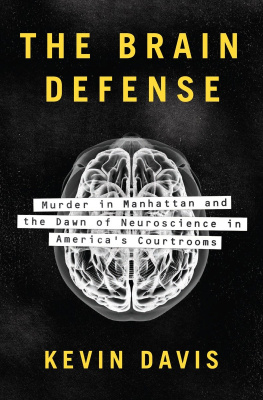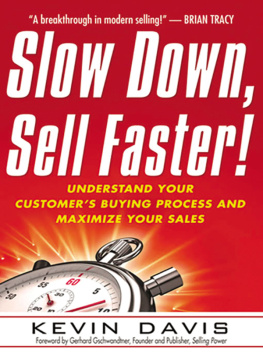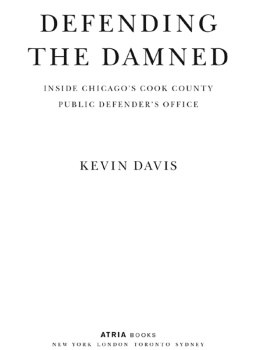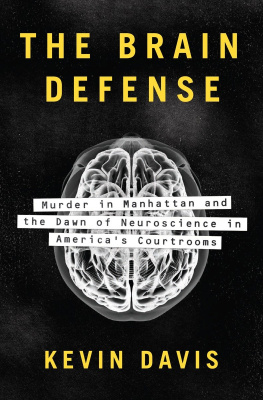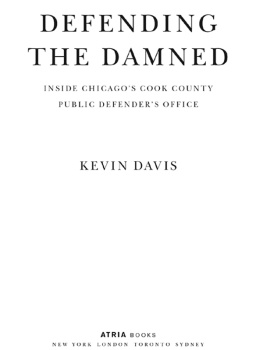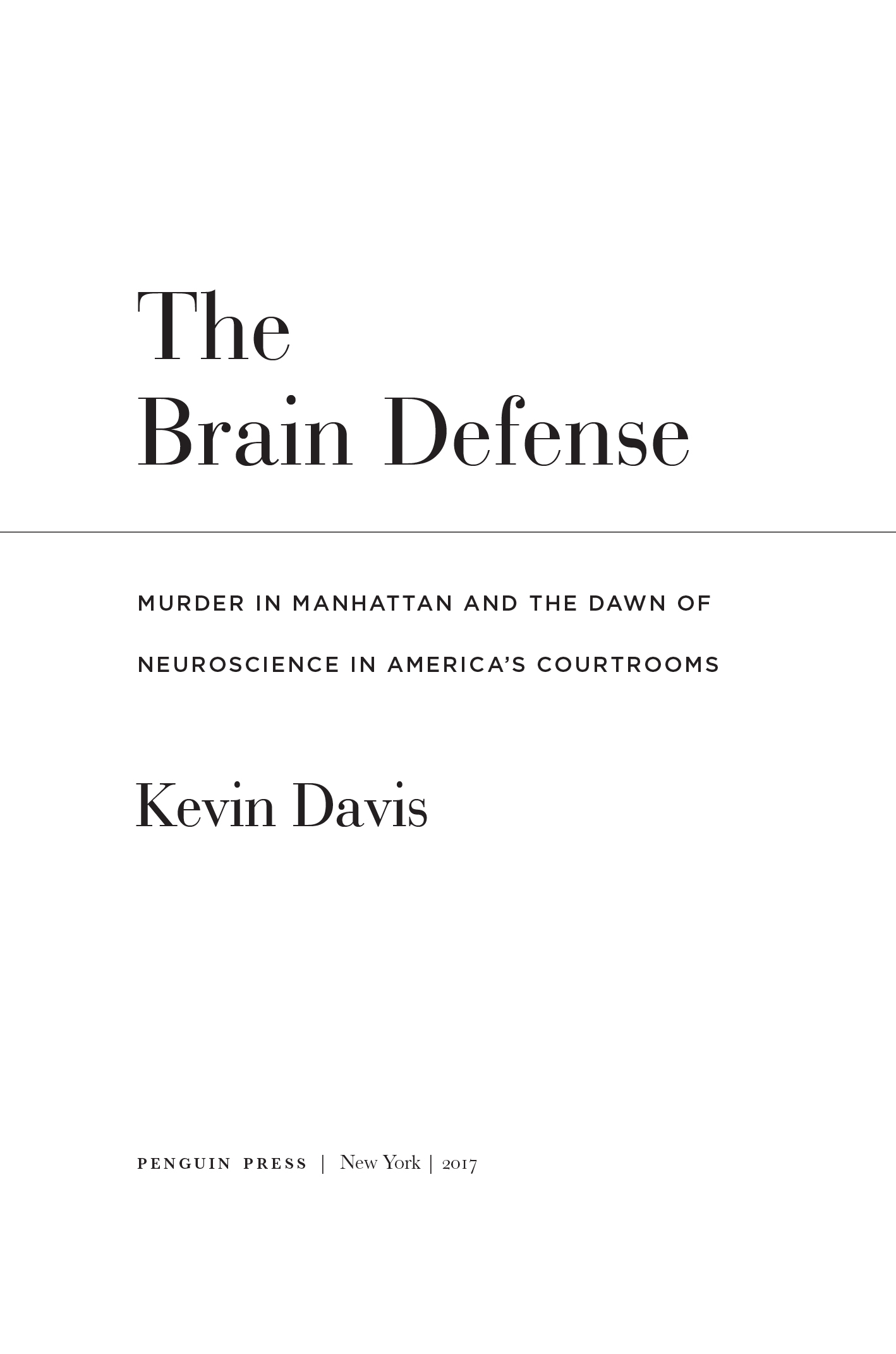Kevin Davis - The Brain Defense: Murder in Manhattan and the Dawn of Neuroscience in America’s Courtrooms
Here you can read online Kevin Davis - The Brain Defense: Murder in Manhattan and the Dawn of Neuroscience in America’s Courtrooms full text of the book (entire story) in english for free. Download pdf and epub, get meaning, cover and reviews about this ebook. year: 2017, publisher: Penguin Press, genre: Detective and thriller. Description of the work, (preface) as well as reviews are available. Best literature library LitArk.com created for fans of good reading and offers a wide selection of genres:
Romance novel
Science fiction
Adventure
Detective
Science
History
Home and family
Prose
Art
Politics
Computer
Non-fiction
Religion
Business
Children
Humor
Choose a favorite category and find really read worthwhile books. Enjoy immersion in the world of imagination, feel the emotions of the characters or learn something new for yourself, make an fascinating discovery.
- Book:The Brain Defense: Murder in Manhattan and the Dawn of Neuroscience in America’s Courtrooms
- Author:
- Publisher:Penguin Press
- Genre:
- Year:2017
- Rating:4 / 5
- Favourites:Add to favourites
- Your mark:
The Brain Defense: Murder in Manhattan and the Dawn of Neuroscience in America’s Courtrooms: summary, description and annotation
We offer to read an annotation, description, summary or preface (depends on what the author of the book "The Brain Defense: Murder in Manhattan and the Dawn of Neuroscience in America’s Courtrooms" wrote himself). If you haven't found the necessary information about the book — write in the comments, we will try to find it.
In 1991, the police were called to East 72nd St. in Manhattan, where a womans body had fallen from a twelfth-story window. The womans husband, Herbert Weinstein, soon confessed to having hit and strangled his wife after an argument, then dropping her body out of their apartment window to make it look like a suicide. The 65-year-old Weinstein, a quiet, unassuming retired advertising executive, had no criminal record, no history of violent behaviornot even a short temper. How, then, to explain this horrific act?
Journalist Kevin Davis uses the perplexing story of the Weinstein murder to present a riveting, deeply researched exploration of the intersection of neuroscience and criminal justice. Shortly after Weinstein was arrested, an MRI revealed a cyst the size of an orange on his brains frontal lobe, the part of the brain that governs judgment and impulse control. Weinsteins lawyer seized on that discovery, arguing that the cyst had impaired Weinsteins judgment and that he should not be held criminally responsible for the murder. It was the first case in the United States in which a judge allowed a scan showing a defendants brain activity to be admitted as evidence to support a claim of innocence.
The Weinstein case marked the dawn of a new era in Americas courtrooms, raising complex and often troubling questions about how we define responsibility and free will, how we view the purpose of punishment, and how strongly we are willing to bring scientific evidence to bear on moral questions. Davis brings to light not only the intricacies of the Weinstein case but also the broader history linking brain injuries and aberrant behavior, from the bizarre stories of Phineas Gage and Charles Whitman, perpetrator of the 1966 Texas Tower massacre, to the role that brain damage may play in violence carried out by football players and troubled veterans of Americas twenty-first century wars. The Weinstein case opened the door for a novel defense that continues to transform the legal system: Criminal lawyers are increasingly turning to neuroscience and introducing the effects of brain injurieswhether caused by trauma or by tumors, cancer, or drug or alcohol abuseand arguing that such damage should be considered in determining guilt or innocence, the death penalty or years behind bars. As he takes stock of the past, present and future of neuroscience in the courts, Davis offers a powerful account of its potential and its hazards.
Thought-provoking and brilliantly crafted, The Brain Defense marries a murder mystery complete with colorful characters and courtroom drama with a sophisticated discussion of how our legal system has changedand must continue to changeas we broaden our understanding of the human mind.
Kevin Davis: author's other books
Who wrote The Brain Defense: Murder in Manhattan and the Dawn of Neuroscience in America’s Courtrooms? Find out the surname, the name of the author of the book and a list of all author's works by series.

